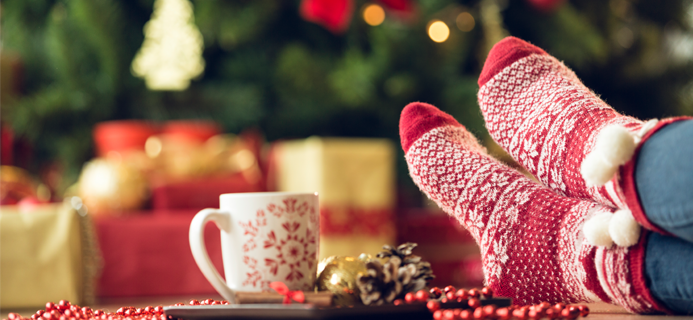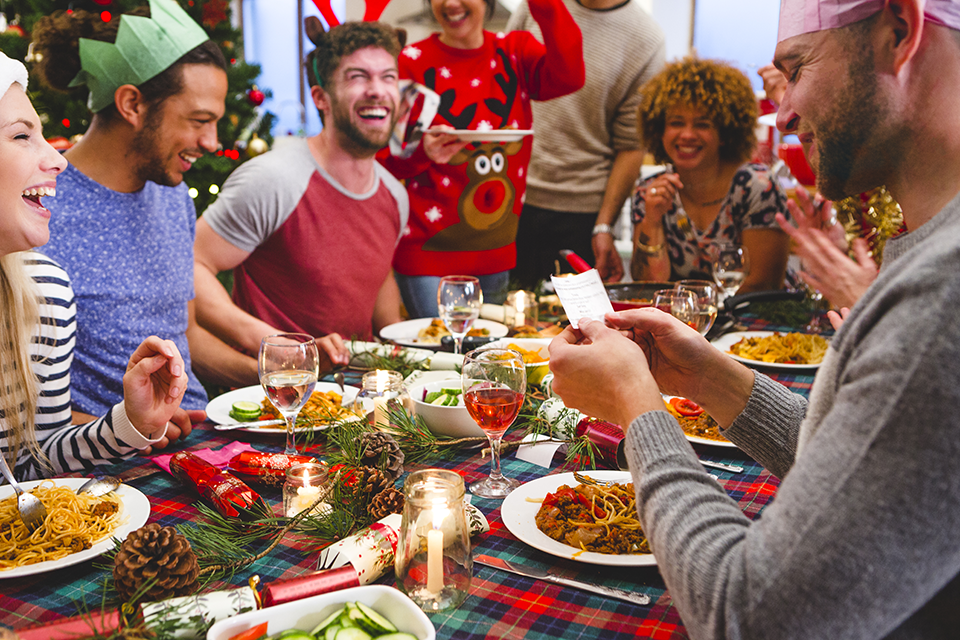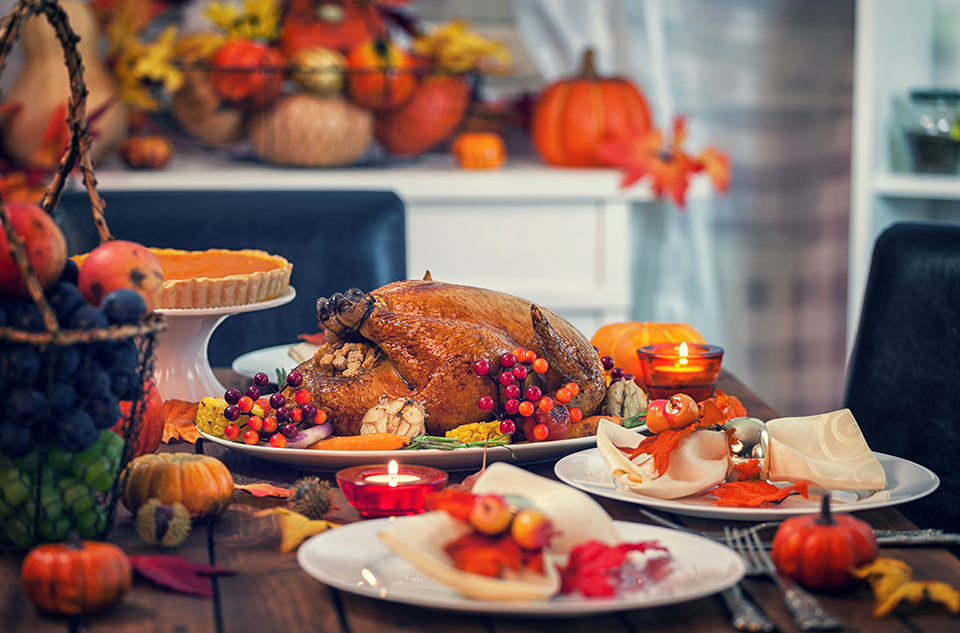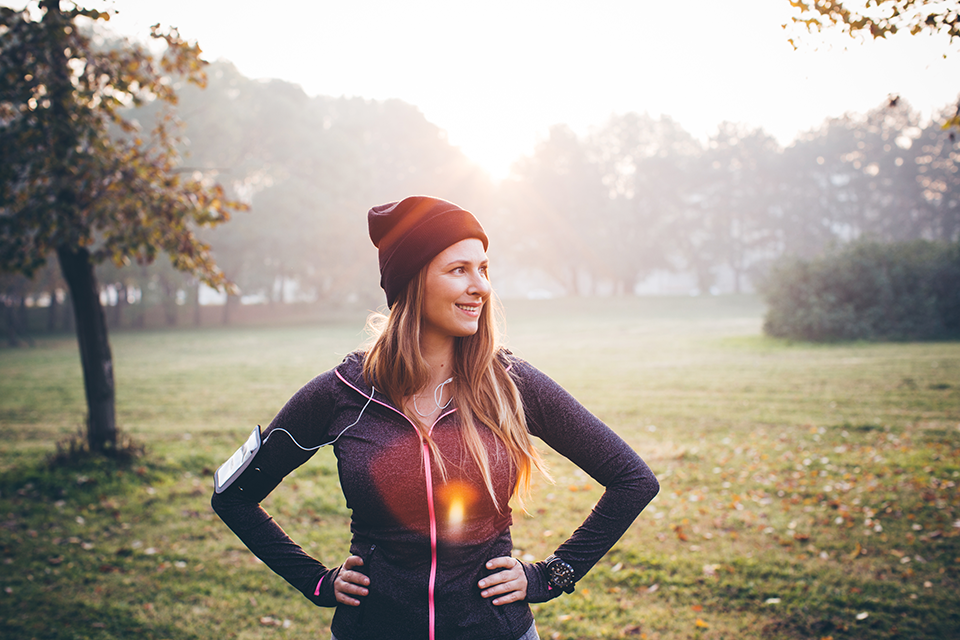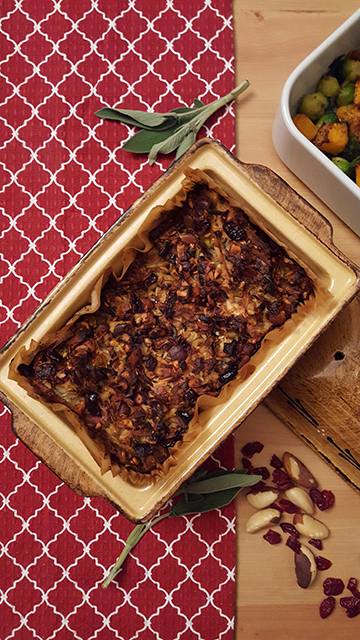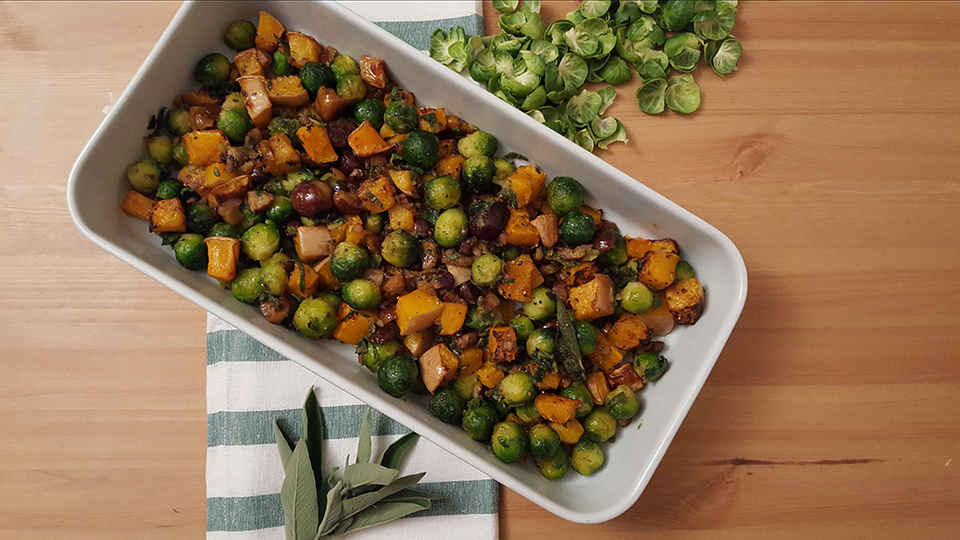It’s easy to stay inside eating sweet food with the heating turned up at this time of year. But did you know letting your body get a little bit cold can boost your immunity? Nutritionist Charlotte Watts shows you how
Christmas in the 21st century can seem all about shopping, decorations and TV, but inside, it’s all systems on heat and protection as we move into the coldest months of the year.
But a key way of boosting our metabolisms during this time is to embrace thermogenesis – the fancy term for ‘heat production’. It refers to that created by the body and relates to foods, exercise and activities that encourage the body to increase its metabolic rate by creating its own heat.
Being cold activates thermogenesis and helps you burn fat and is a healthy stress on our systems. Turning down the heating, cold showers, outdoor movement and specific thermogenic foods signal the body to produce ‘brown fat’ which we burn as fuel, rather than ‘white fat’ which we store.
All forms of thermogenesis represent a favourable form of stress on the body and, according to researchers such as the esteemed Leo Pruimboom, Associate Professor at the University of Gerona and Scientific Director of the Natura Foundation, thermogenics can increase our bodies’ fat-burning capacity by around 10 per cent. Sounds a better recipe for Christmas than starting January feeling sluggish, heavy and demotivated….
MORE: Binge eating before midday? 5 ways to get back on track
How can we use thermogenesis to boost our immunity?
- MOVE MORE IN YOUR DAILY LIFE
Non-exercise Activity Thermogenesis (NEAT) refers to the energy expended during anything we do that isn’t sleeping, eating or doing intentional exercise. NEAT includes all the involuntary ways we create heat in our bodies and thus increase our metabolic rate. Getting used to the cold is one of the best immune-supports you can do; hardiness is a learned skill and you can increase tolerance bit-by-bit. I trained myself to do this about 10 years ago and after a lifetime of being highly sensitive to the cold, I now actively enjoy it and fight off colds easily. Studies have also shown that cold therapy can help those with chronic fatigue, obesity and diabetes.
Try: fidgeting, chatting, or even typing to activate NEAT. Lower your thermostats to under 22º Celsius, have a quick cool shower or cold spritz at the end of your hot one or go without a layer of clothing on a chilly morning.
2. DO ACTUAL EXERCISE OUTSIDE
Exercise Associated Thermogenesis (EAT) is simply the production of heat in the body during intentional exercise such as running, swimming, weight training and competitive sports.
Try: Simply keeping things moving, which doesn’t need to be punishing exercise routines, but walking places, getting out and enjoy festive activities like making decorations, cooking – anything which isn’t just simply sitting on your derriere…. But do rest and recover well of course!
3. EAT HEAT-CREATING FOODS
Diet Induced Thermogenesis (DIT) Certain foods also have a thermogenic effect on the body by encouraging heat production in our systems after we have consumed them, thus raising metabolism.
Try: Eating more foods that have thermogenic effects such as protein (meat, fish, eggs and poultry as well as pulses, lentils and tofu) along with fats such as nuts, avocado and olive and coconut oil as well as caffeine, chilli, cayenne pepper, citrus fruits and green tea. And guess what has the opposite effect? Yup, sugar and refined carbohydrates, so the odd mince pie and ginger biscuit are a lovely treat, but will encourage fat-storage and can compromise immunity as they interfere with infection-fighting white cell production, as well as being inflammatory through AGEs (Advanced Glycation End-products), the chemicals your body produces as a result of eating sugar that can accelerate ageing.
2 thermogenic recipes for Christmas
Parsnip and brazil nut loaf
So, embracing the yuletide savoury goodness of the season is a fine way to enjoy the riches without the downfalls. Here are a couple of lovely recipes packed with immune-supporting antioxidants, fibre, sulphur compounds, thermogenic spices and minerals.
This delicious and hearty loaf featured lots of sulphur allicin from the allium family in the form of leeks and garlic, with soluble fibre from the nuts and seeds – all supporting immune capacity through good gut health.
Prep time: 20 minutes
Cooking time: 1hr 15 minutes
(serves approx. 8)
500g/1.1lb parsnip grated
1-2 leeks (approx. 200g/7oz) washed, halved lengthways and sliced
1-2 white onions (approx. 200g/7oz) diced
2-4 cloves of garlic (according to taste) finely chopped
200g/7oz nuts (I used ½ Brazil nuts and a mix of almonds, hazelnuts and walnuts for the other ½) roughly chopped
50g/1.75oz seeds (sunflower, pumpkin, sesame and linseeds or any combination you like)
50g/1.75oz dried cranberries
Zest of ½ an orange
50ml liquid (orange juice/fizzy wine/stock)
4-5 sprigs (15g) fresh sage
2 sprigs (5-10g) fresh rosemary
5 sprigs (5-10g) fresh thyme
1 tsp fresh ground pepper
½ tsp white pepper
1 tsp sea salt
2 eggs (you can omit these if you want to make the dish vegan and add an additional 100ml orange juice/fizzy wine/stock in its place. However, you may find the loaf is more crumbly without the egg, so you may want to use a vegan egg substitute)
4tbsp olive oil
1. Preheat oven to 190°c/375°F/gas mark 5.
2. Add onions to a saucepan with 1-2 tbsp olive oil and sauté gently to soften for 5 minutes. Add the leeks, garlic, chopped herbs and seasoning and cook for a further few minutes until the leeks have softened then remove the pan from the heat.
3. Add the grated parsnip, roughly chopped nuts, seeds, cranberries, orange zest and juice (or other liquid) and the eggs and mix well until all ingredients combined.
4. Press the mixture into a lined loaf tin (the mix should fill two 8 inch loaf tins or one larger tray to about 2-3 inches thickness). Drizzle 2-3 tbsp of oil over the top of the loaf and then place in the oven to bake for 1hr and 15 minutes. Check occasionally, it may take a bit more or less time, give or take 10-15 minutes.
5. Slice and serve. Recommended served with roast veg, buttered greens and gravy.
Roast squash, Brussel sprouts and chestnuts with sage
Sprouts…. Whether you love ‘em or hate ‘em, this recipe revivifies the archetypal Christmas vegetable with chestnuts; full of protein and often overlooked as a useful larder nut source. A bowl of these makes a great light dinner or you can have as a side for any meat or veggie roast.
Prep time: 15 minutes
Cooking time: 1 hour
(serves 4)
1kg/2.2lb butternut (or other) squash
500g/1.1lb Brussel sprouts
200g/7oz cooked peeled chestnuts
50g/2oz butter
1 tbsp olive oil
20g/8 sprigs sage
½-1 tsp sea salt (smoked if available)
1 tsp fresh ground pepper
1. Preheat oven to 190°c/375°F/gas mark 5.
2. Cut squash into 1 inch cubes (you can leave the skin on). Place the squash on a baking tray (use a large tray which has space to add the sprouts and chestnuts later on), coat with oil, season and add a few sprigs of sage. Roast for 30-45 minutes stirring every 15 minutes.
3. While the squash is roasting, cut the ends off the Brussel sprouts to refresh and then remove any browned outer leaves. If the sprouts are large, you can cut an incision in the base of the sprout to help the heat penetrate the centre of the sprout whilst cooking.
4. Finely slice the remaining sage leaves and set aside.
5. Add sprouts to a salted pan of boiling water. Bring back to the boil and cook for 8 minutes (cooking time will vary slightly depending on the size of the sprouts). Drain the sprouts and return to the pan with butter, sage, salt, pepper and the chestnuts which you can crush slightly prior to adding. Stir until thoroughly coated. Take the tray of roast squash out of the oven, remove the existing sage sprigs as they are likely to burn otherwise (you can add these back in at the end if you wish) and then add the sprout and chestnut mix to the tray of squash and stir to combine. Return the tray to the oven for a further 10-15 minutes to give a lightly roasted finish to the sprouts.
6. Serve with roast meat or nut loaf.

MORE: The perfect paleo dinner party
MORE: 6 popstars open up about their anxiety
MORE: 10 best healthy cookbooks
Like this article? Sign up to our newsletter to get more articles like this delivered straight to your inbox.



